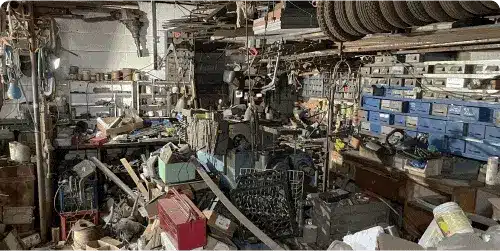Embarking on a new project is exciting, but the environmental impact shouldn't be an afterthought. Minimizing waste isn't just an ethical choice; it's a smart strategy that saves resources, money, and boosts your project's sustainability. This guide equips you with practical steps to integrate waste reduction into every phase of your project lifecycle.
What are the Fundamental Principles of Waste Reduction?
Waste minimization, at its core, is about proactively reducing the volume and toxicity of waste generated throughout a project's lifecycle. This encompasses a holistic approach encompassing prevention, reduction, reuse, recycling, and responsible disposal, aligning with sustainability principles and circular economy models. The fundamental principle is the waste hierarchy: reduce, reuse, recycle. By prioritizing waste prevention and reduction, we minimize https://canvas.instructure.com/eportfolios/3769012/home/secure-your-perfect-dumpster-your-2025-guide-to-waste-management-solutions the environmental footprint and resource depletion associated with waste management. Implementing green practices is key to effective waste reduction. Efficient waste management systems play a critical role in the overall success of a sustainable project.
How Does Strategic Project Planning Minimize Waste?
Meticulous planning forms the bedrock of any successful waste minimization strategy. Before a single material is procured, thoroughly evaluate the project's scope, define precise material requirements, and meticulously plan for efficient resource allocation. Optimize your processes to minimize material usage through detailed design and precise calculations. This includes leveraging BIM (Building Information Modeling) software to identify and reduce material waste. Effective project management techniques, such as lean construction methods, can significantly reduce waste and boost efficiency. Implementing a robust procurement strategy can help in sourcing sustainable materials and minimizing transportation waste.
The Crucial Role of Material Selection in Waste Reduction
The materials chosen directly impact the project's overall waste generation. Prioritizing sustainable materials, such as recycled content products or rapidly renewable resources, significantly reduces environmental impact. Opt for materials with minimal packaging and long lifespans. Analyze life cycle assessments (LCAs) of various materials to compare their environmental footprints. Tables comparing traditional and eco-friendly materials, illustrating waste generation differences, highlight the benefits of conscious material selection and efficient resource management. Consider using prefabricated components, minimizing on-site waste generation and improving efficiency.
Integrating Recycling and Composting into Your Project Workflow
Establish a robust recycling program tailored to your project's specific waste streams. Clearly label bins for different materials (paper, plastic, metal, etc.) and ensure easy access. Educate your team on proper recycling procedures. For organic waste, consider on-site composting. This diverts food scraps and yard waste from landfills, reducing greenhouse gas emissions and creating nutrient-rich compost for landscaping. Effective waste segregation and efficient waste collection methods contribute towards improved recycling rates. Partner with local recycling facilities to optimize your waste management process.


Innovative Approaches to Repurposing and Upcycling Materials
Transform waste into valuable resources through innovative repurposing and upcycling techniques. For example, scrap wood can be crafted into furniture, and old pallets repurposed into shelving units. Glass jars can serve as storage containers, and fabric scraps used for patching or crafting. This not only reduces waste sent to landfills but also fosters creativity and potentially adds unique design elements to your project. Explore innovative waste-to-energy solutions which transform non-recyclable waste into usable energy. Encourage creative reuse through staff competitions or collaboration with local artists and designers.
Utilizing Waste Audits for Waste Minimization Success
Conducting regular waste audits offers valuable insights into your project's waste generation patterns. These audits involve systematically measuring and analyzing your waste streams. Identify waste hotspots, categorize waste types, and quantify the volume generated. Tracking waste generation over time allows for monitoring progress and evaluating the effectiveness of implemented strategies. Share the findings with the project team and adjust your waste minimization strategy based on data-driven insights. Regular review and improvement of waste management practices is essential for long term success.
Continuous Improvement: The Key to Ongoing Waste Minimization
Waste minimization isn't a one-time fix; it's a continuous journey. Establish feedback loops to capture lessons learned throughout the project. Analyze data from waste audits and recycling programs to identify areas for improvement. Regularly review best practices in waste management, and adopt new techniques to refine your approach. Share this knowledge within your team and across your organization to create a culture of sustainability and continuous improvement. Performance measurement and data-driven decision-making are crucial for successful waste minimization.
Engaging Stakeholders in Sustainable Practices
Collaborate with all stakeholders – from suppliers to clients – to foster a shared commitment to sustainable practices. Responsible sourcing of materials is paramount. Choose suppliers committed to minimizing their environmental impact. Transparent communication about your sustainability goals helps build trust and fosters collaboration. Encourage environmentally conscious practices across the supply chain. Actively solicit feedback from stakeholders about the project's environmental performance.
Long-Term Advantages of Minimal Waste Projects
Minimizing waste yields significant long-term benefits beyond environmental protection. Reduced waste translates to lower disposal costs, and the use of recycled materials often proves more cost-effective than virgin materials. Sustainable practices enhance your project's reputation and attract environmentally conscious clients. By contributing to a circular economy, you participate in a more sustainable future for the planet. Showcase your project's commitment to minimal waste to demonstrate your organization's dedication to sustainability.
Conclusion: Embracing a Waste-Conscious Future
Implementing waste minimization strategies isn't merely an add-on; it's an integral part of responsible project management. By embracing the principles outlined here—from meticulous planning to continuous improvement—you can significantly reduce your project's environmental impact while simultaneously bolstering its efficiency and long-term sustainability. Let's work together to create a future where projects leave a positive legacy, not a trail of waste. Start planning your next project with sustainability at the forefront, and witness the positive transformation.